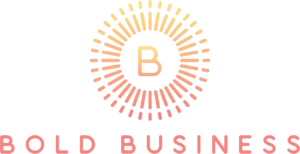In today’s dynamic business landscape, managing leased assets efficiently is crucial for organizations striving to optimize operations and maintain compliance with regulatory requirements. Leasing management encompasses a range of processes and activities aimed at streamlining the management of lease agreements, tracking lease terms and payments, and ensuring adherence to legal and financial guidelines. In this guide, we’ll explore the fundamentals of leasing management, its benefits, best practices, and how businesses can choose and implement the right leasing management solution to drive success.
Understanding Leasing Management
Leasing management is the systematic approach to managing leased assets, including real estate, equipment, and vehicles. It involves the creation, tracking, and management of lease agreements, as well as the handling of associated documentation and financial transactions. Effective leasing management is essential for businesses to optimize their asset utilization, minimize risks, and maintain compliance with regulatory standards.
Key Components of Leasing Management
Lease Agreement Creation and Management: Businesses can create comprehensive lease agreements, defining terms, rates, payment schedules, and conditions with ease.
Lease Term Tracking and Notifications: Automated notifications ensure timely actions for lease renewals, terminations, and critical milestones.
Rental Invoicing and Payment Processing: Automation streamlines rental invoicing and payment processes, ensuring accuracy and efficiency.
Document Management: Centralized storage and management of lease-related documents facilitate easy access and simplify audit processes.
Compliance and Regulatory Adherence: Features to handle lease accounting standards, tax regulations, and lease disclosure requirements ensure adherence to legal and financial guidelines.
Benefits of Implementing Leasing Management Solutions
Implementing leasing management solutions offers numerous benefits to businesses, including improved operational efficiency, reduced administrative burden, better financial management, enhanced compliance, and increased visibility into lease-related activities. Case studies and examples demonstrate the positive impact of leasing management solutions on businesses across various industries.
Best Practices for Leasing Management
To optimize leasing management processes, businesses should follow best practices such as structuring lease agreements effectively, implementing robust tracking mechanisms, maintaining accurate documentation, and staying updated on regulatory changes. Practical tips and guidance help organizations enhance their leasing management capabilities and achieve their objectives.
Choosing the Right Leasing Management Solution
When selecting a leasing management solution, businesses should consider factors such as scalability, integration capabilities, user-friendliness, compliance features, and vendor reputation. Evaluating different solutions and conducting thorough assessments empower organizations to make informed decisions that align with their specific needs and objectives.
Implementing Leasing Management: Tips for Success
Successful implementation of a leasing management solution requires careful planning, effective communication, and stakeholder engagement. Strategies for training staff, managing change, and overcoming potential challenges during implementation ensure a smooth transition and maximize the benefits of the new system.
Future Trends in Leasing Management
Emerging trends and technologies such as artificial intelligence, blockchain, and advanced analytics are shaping the future of leasing management. These innovations offer opportunities for further optimization, improved decision-making, and enhanced risk management in lease-related activities. Businesses should stay informed about these trends to remain competitive and capitalize on new opportunities.
Takeaway
Effective leasing management is essential for businesses to optimize operations, minimize risks, and maintain compliance with regulatory requirements. By understanding the key components of leasing management, implementing best practices, and choosing the right leasing management solution, organizations can maximize efficiency and drive success in their lease-related activities. Embracing future trends and innovations ensures businesses remain agile and competitive in today’s rapidly evolving business environment.
